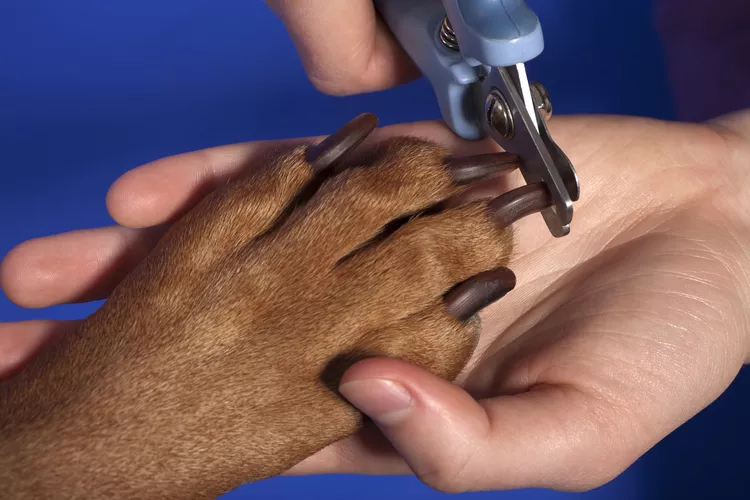How to Handle Aggression in Dogs During Nail Clippings

Many people enjoy getting their nails done at a salon but the same is not true for many dogs. Some dogs simply don't enjoy having their nails clipped but still allow it to happen and others actually dislike it so much that they become aggressive.
This aggression is not only a danger to the people trying to clip the nails but can result in unintended physical trauma to the dog as well. Unclipped nails can become so long that they break or get caught in things and an aggressive dog can hurt itself in an attempt to escape the nail clipping event, become unnecessarily stressed, and it can damage the bond of trust you have created.
Knowing how to handle a dog that becomes aggressive during a nail clipping will help keep both you and your dog safe and stress-free while still attending to a required task.
Desensitization to Nail Clipping
If your dog becomes aggressive at the mere sight of nail clippers you can work on desensitizing them at home.
Buy a pair of nail clippers or a nail grinder, like the Dremel PawControl, and show them to your dog while presenting a treat. If necessary, you can also simply place the nail clippers on the ground where your dog can see them and provide a lot of positive reinforcement as they get sniffed. Keep the nail clippers in your dog's sight and work your way up to petting your dog while holding the clippers and then gently touching the clippers on your dog. This will help them learn that the clippers pose no threat.
Getting your dog comfortable with having their paws touched and handled can also help to desensitize them to nail clippings. Gently squeeze the toes and nails while holding your dog's paw and be sure to reward them with plenty of praise and treats.
Desensitization to both the nail clippers and having the toes squeezed can take some time and patience is important. It may take weeks or months to completely desensitize a dog that is aggressive towards nail clippings. Always take things slowly and don't push your dog over their threshold. The aim is to have them feel totally relaxed with each small step before progressing onto the next stage.
By adopting these techniques with a young puppy before their first nail clipping, it will reduce the chances of them having a nervous or aggressive reaction in the first place.
Other Behavior Modification Products
Pheromones like Adaptil®, compression wraps like Thundershirts®, and other options may help your dog adjust to having its nails trimmed. These items will not provide enough help on their own, but they are safe options to use with supplements, medications, and desensitization techniques. Basket muzzles may be used to keep the person restraining your dog safe, but a muzzle is not a solution for treating your dog's fear, stress, anxiety, or aggression.
Oral Medications and Supplements
Some dogs may benefit from oral medications like Trazadone or Sileo®, or supplements like Zylkene® or Composure Pro®. Supplements should not sedate your dog, but medications typically will. Discuss these and other options with your veterinarian to see whether your dog may benefit from one or a combination of products. Supplements on their own may not be enough help for an aggressive dog but may be used alongside medication to potentially decrease the necessary dosage.
Injectable Sedatives
If your dog is aggressive to the point of trying to bite, injectable sedatives may be necessary in order to clip problematic nails until desensitization has been successful. Nails cannot be allowed to grow without being trimmed or naturally worn down so if they are long enough, your veterinarian will need to inject a sedative into your dog in order to safely trim the nails.
Physical restraint should not be performed if a dog is struggling and trying to bite. This will only make the dog more fearful and aggressive next time and could potentially hurt the person restraining it.
An injection will sedate your dog so that it doesn't become aggressive during the nail trim therefore also preventing the stress, fear, and anxiety that it likely experiences during these events as well.
Injections do have risks and costs associated with them, but, if desensitization is being practiced at home, over time you may be able to use oral medications or supplements instead.
As your dog becomes less reactive and aggressive towards nail clippings, injectable sedatives may not always be needed. No one should physically force a dog to have its nails trimmed, even if it is muzzled. If it is aggressively trying to stop the process from occurring by growling, snarling, or trying to bite then an injectable sedative should be administered or the nail trim should be stopped. Always look for a veterinarian that uses low-stress handling techniques.